Colombia Crescia Coca region, baking analysis and brewing tips Panama BOP Best
Raw bean file Colombian Rose Summer
| 01 | introduction |
Author Chris Kornman
In the central part of the Valle del Cauca region of Colombia, there are many coffee estates, including Cerro Azul, Las Margaritas, La Esperanze, Potosi and Hawaii, managed by the Luis and Rigoberto Herrera brothers, who are the third generation of the coffee grower family. In 1945, these estates first planted different varieties, including red, yellow bourbon, Kaddura and iron pickup. Rigoberto was involved in the management of a coffee farm in Panama, and it was the year he was there that the estate won the BOP (Panama's best) championship. After that, Rigoberto returned to the family business with Rosa. This Crown Jewel (Crown Jewel) is the work of the Herrera brothers on this basis. We are honored to be able to introduce this bean for the 2016 season.
A few months ago, we were invited to a promotional event in Los Angeles by Rigoberto and his marketing partner Felipe. Rigoberto is a very charming man, passionate and knowledgeable about coffee cultivation, and he tells us a lot about Cerro Azul Farm (there are about 30, 000 rose summer coffee trees there). He told us how the local microclimate affected the varieties and the anaerobic fermentation methods they used in the coffee processing. Depending on the temperature, the fermentation time may last 19-22 hours, followed by drying in a dryer, and the degree of drying needs to be strictly controlled.
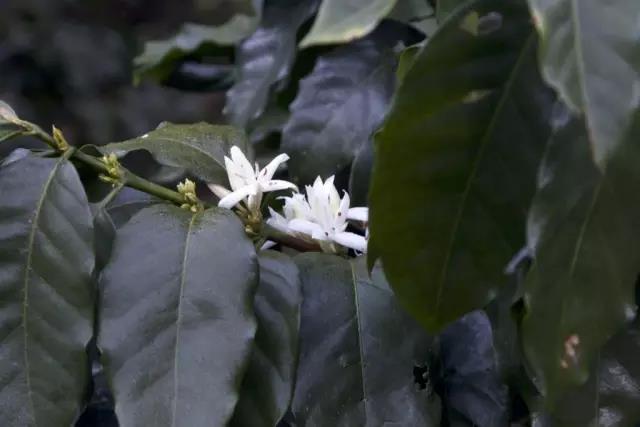
A unique flavor of coffee is its inherent acidity, especially Colombian coffee grown at high altitude, which is more prominent, but this feature is not obvious in Rosa varieties. When coffee is roasted to a certain degree, its floral aroma, fruit acid and other regional flavor will be shown.
Plantation Manor: Luis and Rigoberto Herrera, Cerro Azul farm de Granja la Esperanza
Origin: Caicedonia, Valle del Cauca, Colombia
Altitude: 1800-2000 masl
Treatment: anaerobic fermentation, fermentation time lasts 19-22 hours, and then dried by dryer
Variety: Geisha
Harvest time: May-July 2016
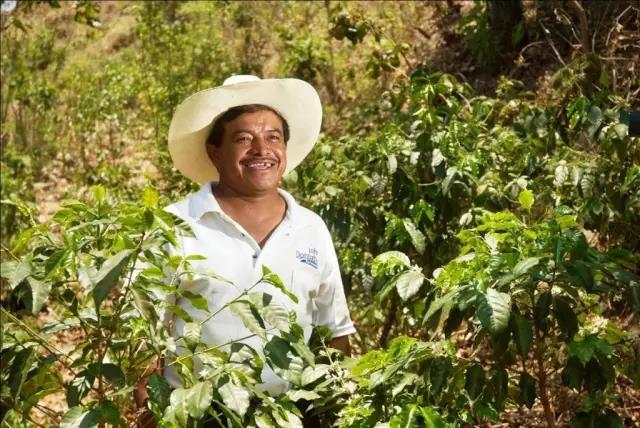
02 | Analysis of raw beans
Author Chris Kornman
The Rosa species we know now is completely different from the original species of Rosa in western Ethiopia. This variety of coffee was first made in Kenya, Uganda and Tanzania, and then across the ocean to the Center for Tropical Agricultural Research and higher Education in Costa Rica. The center tried to grow the coffee in the late 1950s and early 1960s, but was abandoned because of its low yield and poor quality. Now people have planted different varieties of Rosa, thanks to the altitude, precipitation, soil characteristics, nutrients, microclimate and other factors, now this variety of coffee has become sweet and floral. But at that time, these conditions could not be realized, and the taste was not accepted. It can be said that it is the times that have created the present rosy summer.
This Rosa Coffee from Cauca is the slender bean shape of a typical Rosa variety. Although it grows at high altitude, the texture of the beans appears to be very uniform. I don't know if the slender bean shape will affect its production process, but there is no doubt that this shape is easy to form a focus, so we must pay attention to it in the baking process.
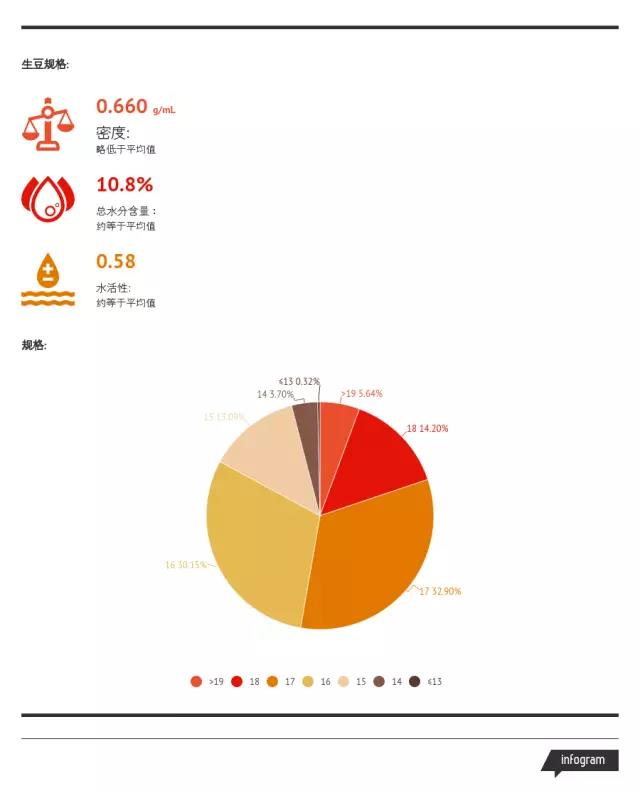
03 | Baking analysis
Author Jen Apodaca
We baked two batches of rose summer and both performed well in the cup test, but there were differences due to differences in varieties. We first baked PR-439, this batch with floral aromas, similar to jasmine, rose and golden lotus, with dark chocolate flavor. The other is PR-440, which tastes sweeter and more balanced, with flavors of peach, lavender and grapefruit.
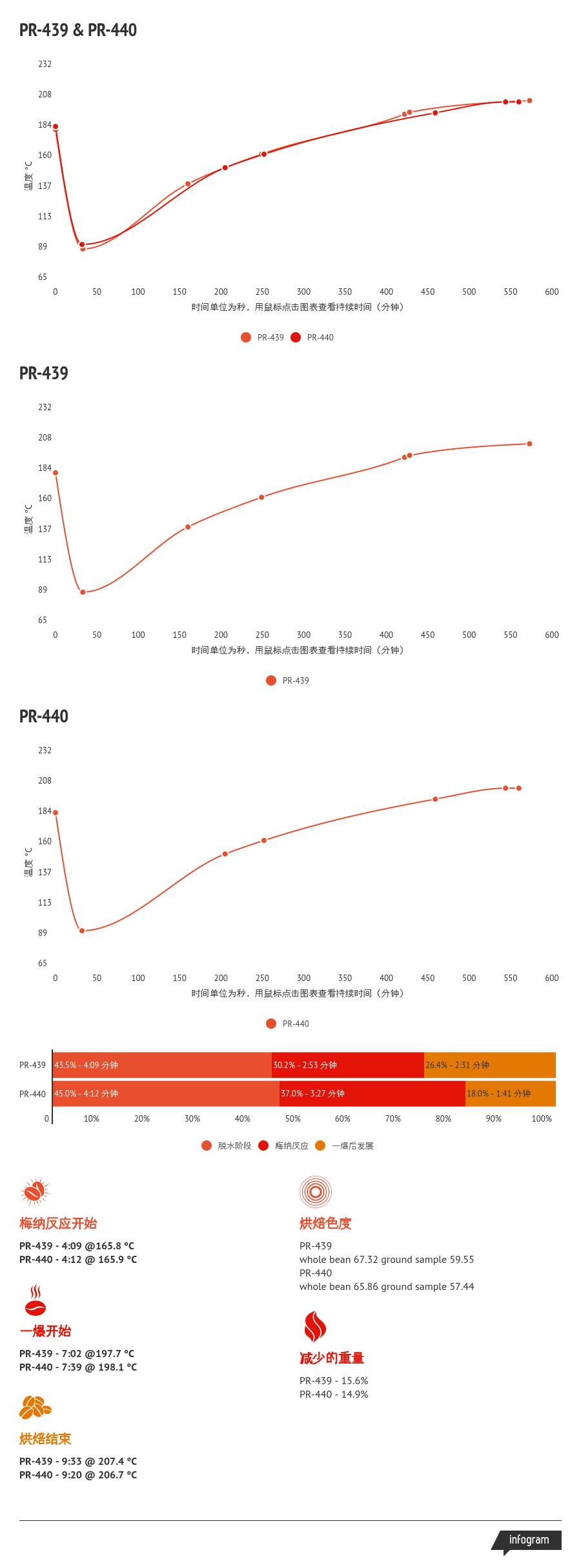
04 | Cooking analysis,
Author Chris Kornman
This rose variety from Colombia has been tested over and over again and performs best when using drip filtration and sipping. When tested on the second day after baking, the complexity of the flavor was less obvious than on the first day, but overall, it was a sweet, floral and fruity coffee, which was basically in line with our expectations for this variety.

Important Notice :
前街咖啡 FrontStreet Coffee has moved to new addredd:
FrontStreet Coffee Address: 315,Donghua East Road,GuangZhou
Tel:020 38364473
- Prev
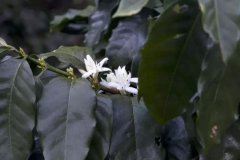
Introduction of raw bean archives wholesale Colombian Kao card producing area Rosa
Raw Bean Archives Colombia Rose 01 | introduction by Chris Kornman there are many coffee estates in the middle of the Valle del Cauca (Cauca) region of Colombia. These estates, including Cerro Azul, Las Margaritas, La Esperanze, Potosi and Hawaii, are managed by the Luis and Rigoberto Herrera brothers, who grow the coffee.
- Next
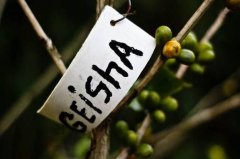
Geisha rosy summer Panamanian boutique coffee king of rosy summer coffee
The species of Geisha was discovered in the Rose Forest of Ethiopia in 1931 and sent to the Coffee Institute in Kenya. Introduced to Uganda and Tanzania in 1936 and Costa Rica in 1953, little attention was paid to Rose Summer until one day, Don Pachi was originally brought to Costa Rica from GESHA, a small town in southwestern Ethiopia.
Related
- Detailed explanation of Jadeite planting Land in Panamanian Jadeite Manor introduction to the grading system of Jadeite competitive bidding, Red bid, Green bid and Rose Summer
- Story of Coffee planting in Brenka region of Costa Rica Stonehenge Manor anaerobic heavy honey treatment of flavor mouth
- What's on the barrel of Blue Mountain Coffee beans?
- Can American coffee also pull flowers? How to use hot American style to pull out a good-looking pattern?
- Can you make a cold extract with coffee beans? What is the right proportion for cold-extracted coffee formula?
- Indonesian PWN Gold Mandrine Coffee Origin Features Flavor How to Chong? Mandolin coffee is American.
- A brief introduction to the flavor characteristics of Brazilian yellow bourbon coffee beans
- What is the effect of different water quality on the flavor of cold-extracted coffee? What kind of water is best for brewing coffee?
- Why do you think of Rose Summer whenever you mention Panamanian coffee?
- Introduction to the characteristics of authentic blue mountain coffee bean producing areas? What is the CIB Coffee Authority in Jamaica?

